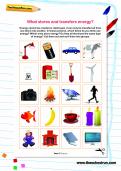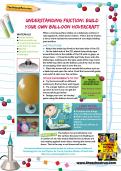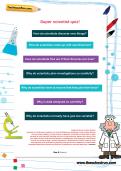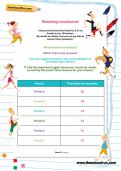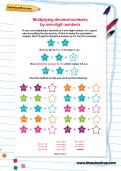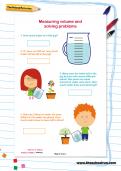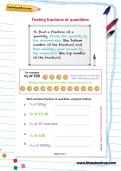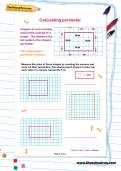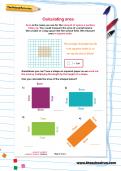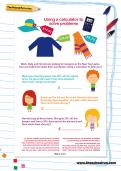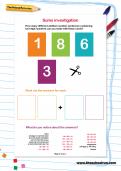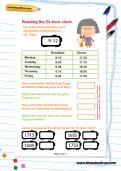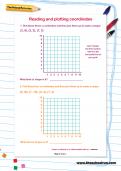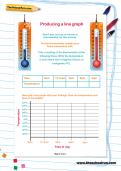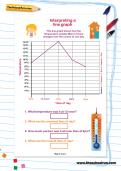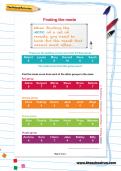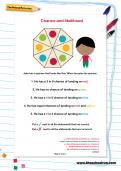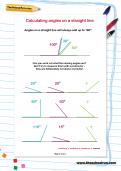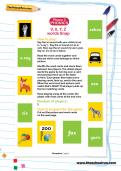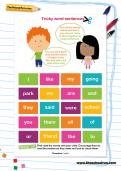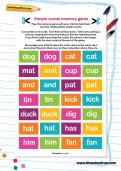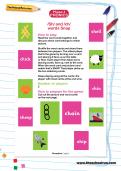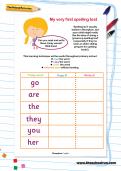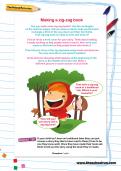worksheets
Free worksheets: Science, KS2, Y6
You’ll need to login or Register first to access these worksheets for free.
Once you’ve tried out our free worksheets, why not explore all our resources (1000s of worksheets, interactive tutorials, learning packs and more) with a 14-day FREE trial subscription.
What stores and transfers energy?
Energy cannot be created or destroyed, it can only be transferred from one store into another. In these pictures, which items do you think use energy? Which ones store energy? Do they all store/use the same type of energy? Cut them out and sort them into groups.
Understanding friction: Build your own balloon hovercraft
When a moving surface slides on a stationary surface it rubs against it, which slows it down. This is due to friction, a force which resists the movement of one object sliding past another. Understand more about friction with a fantastic practical project: make your own balloon hovercraft!
Super scientist quiz
Quiz questions to encourage your child to think about how scientists work and why they do the things they do.
Reaching conclusions
A worksheet showing results of an experiment with questions underneath to consider.
Multiplying decimal numbers by one-digit numbers
If you are multiplying a decimal by a one-digit number, it is a good idea to multiply the decimal by 10 first to make the calculation simpler. Don’t forget to divide the answer by 10, too! Use this method to help you work out these sums.
Finding fractions of quantities
To find a fraction of a quantity, divide the quantity by the denominator (the bottom number of the fraction) and then multiply your answer by the numerator (the top number of the fraction). Can you work out these fractions of quantities, using this method?
Calculating perimeter
Imagine an ant crawling around the outside of a shape. The distance the ant walks is the shape’s perimeter. Can you measure the sides of these shapes by counting the squares and work out their perimeters?
Calculating area
Area is the name we use for the amount of space a surface takes up. You could measure the area of a small space like a table or a big space like the school field. We measure area in square units. Can you calculate the area of these shapes?
Using a calculator to solve problems
Mark, Katy and Harriet are looking for bargains in the New Year sales. Can you help them make their purchases, using a calculator to help you?
Sums investigation
How many different addition number sentences containing two-digit numbers can you make with these cards?
Reading the 24-hour clock
This table shows the times each day that Mrs Smith feeds her cat, Topsy. Can you read the table then answer the questions, then change all the times into the 12-hour clock?
Reading and plotting coordinates
Plot these four co-ordinates and then join them up to make a shape. What kind of shape is it?
Producing a line graph
See if you can buy or borrow a thermometer for this activity. Put the thermometer outside your home somewhere safe. Take a reading of the thermometer at the following times. Write the temperature in each blank box in degrees Celsius or centigrade. Now plot a line graph with your findings. How are temperature and time of day linked?
Interpreting a line graph
This line graph shows how the temperature outside Mary’s house changes over the course of one day. Can you read the graph and answer the following questions?
Finding the mode
When finding the MODE of a set of results, you need to look for the result that occurs most often. Find the mode spelling score from each of the groups in this class.
Chance and likelihood
Jake has a spinner that looks like this. Can you work out which of the following statements are correct, thinking about chance and likelihood?
Calculating angles on a straight line
Angles on a straight line will always add up to 180 degrees. Can you work out what the missing angles are? Don’t try to measure them with a protractor – they are deliberately not drawn correctly!
V, X, Y, Z words Snap (Phase 3 phonics)
Shuffle the word cards and share them between two players. The oldest player starts the game by turning over a card and placing it face up on the table or floor. Each player then takes turns placing cards, face up, next to the card. When the word card and picture card match that’s SNAP! The player with most cards at the end wins.
Tricky word sentences
Cut out the words and see if you can put some of them together to make sentences. You can stick them onto another sheet of paper if you like, and add a full stop at the end.
Simple words memory game
Play this memory game with your child to help them practise reading simple words.
/Sh/ and /ch/ words Snap (Phase 3 phonics)
A free Phase 3 phonics game created by an experienced teacher to help your child practise their Phase 3 phonics learning. This printable activity covers /Sh/ and /Ch/ words in a simple game of Snap.
My very first spelling test
Spelling isn’t usually tested in Reception, but your child might really like the idea of doing a ‘grown-up spelling test’ (especially if they’ve seen an older sibling prepare for spelling tests!).
Making a zig-zag book
Can you make some zig-zag books? First of all do a front cover for your story. Think about making it really exciting so that people want to read it. Also write your name on the front so that people know who wrote it. Then tell your story in the zig-zag book using words and pictures. You may even like to use speech bubbles!
